Footballers who wore unusual shirt numbers
From the bizarre to the ridiculous, a look at some of the more unusual shirt number choices for footballers over the years...

The days of football teams wearing numbers 1 to 11 are long gone. It's a squad game now.
But it's not just 1 to 25, either. Some players just like to be different and all sorts of numbers can be seen nowadays.
Not one for the purists, but it's certainly curious. Here, a look at some footballers who wore unusual shirt numbers and the reasons behind their choice...
32. Phil Foden

Despite emerging as one of English football's most exciting players at Manchester City, Phil Foden picked an unusual number.
Foden wears the No.47 to honour his late grandfather Ronnie, who was a huge City fan and sadly passed away at the age of just 47. The England attacker had the chance to switch to the no. 10 after Sergio Aguero left, but stuck with 47. His grandfather would be proud.
31. Derek Riordan

Derek Riordan returned to Hibernian for a second spell on deadline day in 2008 and the striker was presented with an unusual shirt number – 01.
His favoured 10 was taken, so Hibs inverted the number and he wore 01, which looked strange to say the least. He got his no. 10 back the following season.
The best features, fun and footballing quizzes, straight to your inbox every week.
30. Lionel Messi
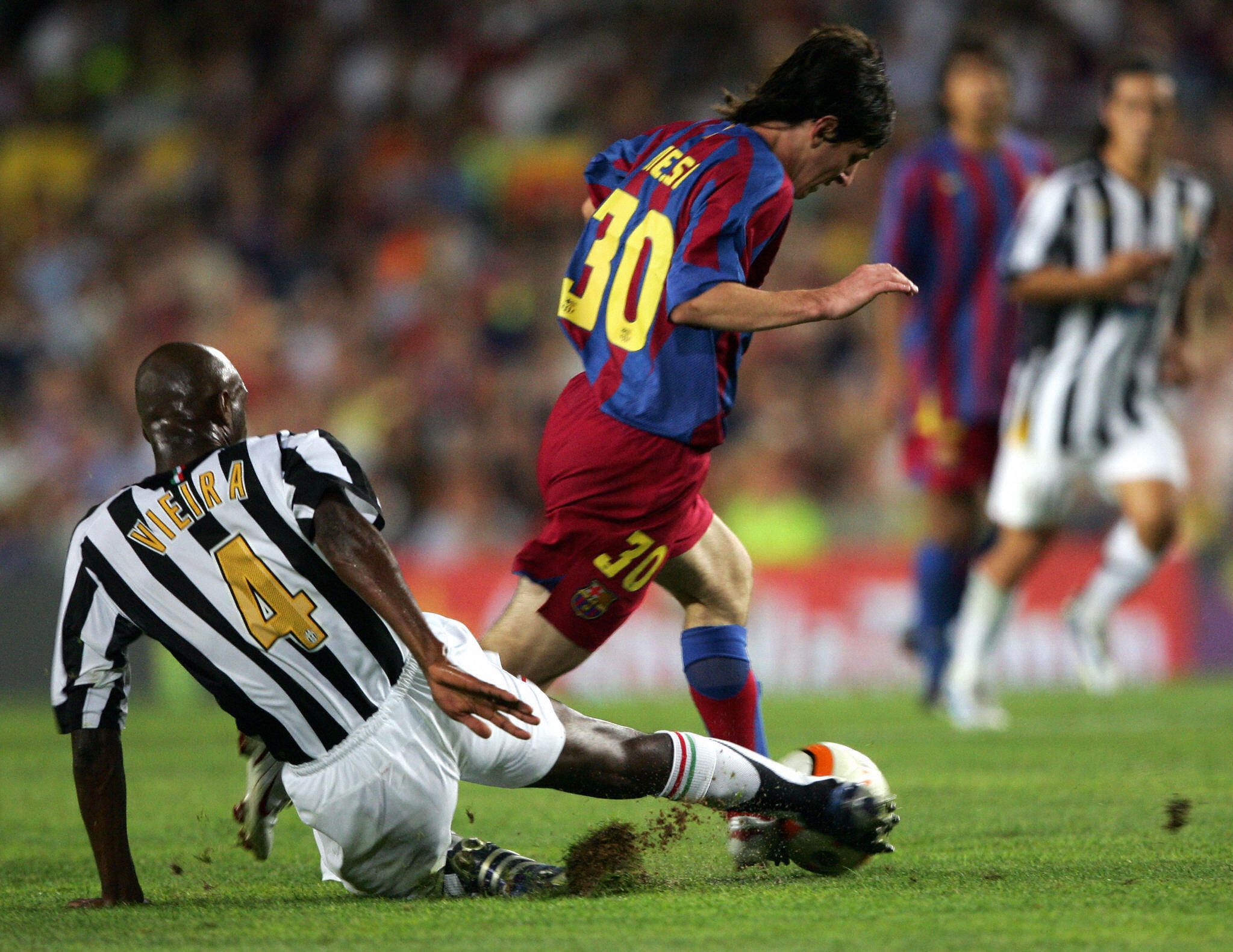
Before he became a legend in the No.10 shirt at Barcelona, Lionel Messi wore 19. And prior to that, he used the No.30.
The Argentine attacker started out in the No.30 in the first team at Barcelona and his first goal was scored wearing that shirt. Later, he wore the No.30 again at Paris Saint-Germain. Incidentally, he didn't wear 10 at Barça until the start of the 2008/09 season, taking the number after Ronaldinho left the Catalan club.
29. Khalid Boulahrouz

Signed from Hamburg in the summer of 2006, Khalid Boulahrouz only played 13 times for Chelsea in the Premier League and 20 games in all competitions.
The Dutch defender, nicknamed "the Cannibal", bizarrely wore the No.9 shirt for the Blues after Hernan Crespo's departure. Midfielder Steve Sidwell took the number next and claimed it was all down to Jose Mourinho trying to make a point to the board that there was no proper striker at the club.
28. Gianluigi Donnarumma

Gianluigi Donnarumma was born in 1999 and opted to wear the 99 shirt as a youngster at AC Milan. Surprisingly, he has stuck with it ever since.
The Italian goalkeeper now wears the No.99 with Paris Saint-Germain, having started with 50. With Italy, though, he succeeded the legendary Gianluigi Buffon and wears the No.1 for the Azzurri.
27. Micky van de Ven
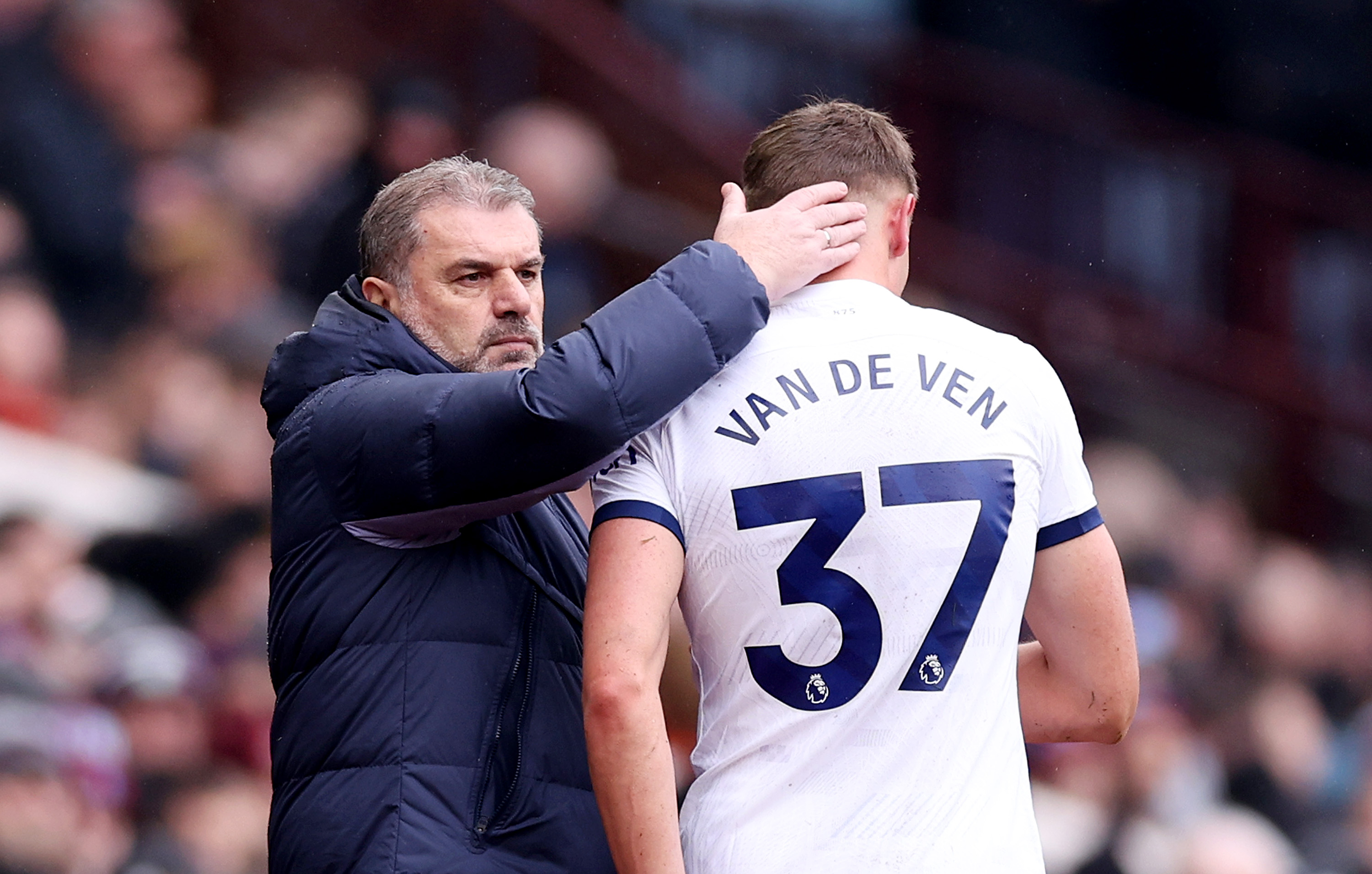
Micky van de Ven wore the number 5 shirt at Wolfsburg, but the Dutch defender opted for the No.37 after signing for Tottenham in 2023.
The centre-back has since revealed that 37 was the favourite number of a friend who passed away when he was younger. "It's for him," he said.
26. Lassana Diarra

Lassana Diarra was an impressive defensive midfield player at his peak. He was not, however, your typical number 10.
Bizarrely, the French international wore No.10 for two seasons at Real Madrid. Sensibly, the shirt was then given to Mesut Ozil in 2010 as Diarra took the No.24 instead. Later, he wore the No.85 in Russia.
25. Samuel Eto'o

Samuel Eto'o joined Everton in the summer of 2014 after his contract at Chelsea expired, but the former Barcelona striker was gone by January after scoring just four goals for the Toffees in 20 appearances.
The Cameroonian opted for a few strange numbers in his career. When he couldn't have the No.9, he wore 99 at Anzhi Makhachkala at Sampdoria and 81 later in Turkey and Qatar. At Everton, bizarrely, he played in the No.5.
24. Hicham Zerouali
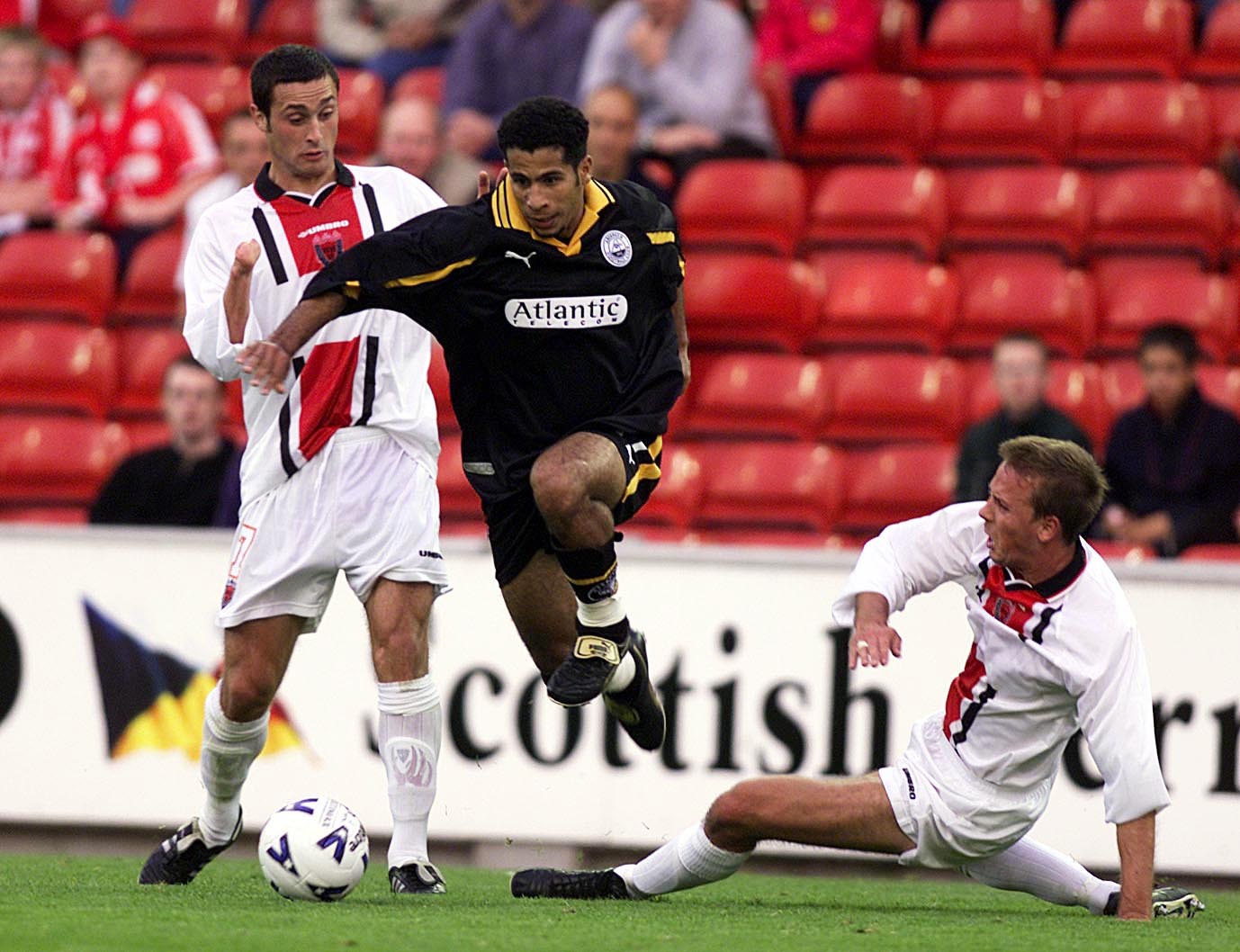
Hicham Zerouali was nicknamed "Zero" and during his time at Aberdeen, he played for a season with the number 0 on the back of his shirt.
The Moroccan midfielder became the first player to wear the number in Scotland. Later, it was outlawed. He tragically passed away in a car accident in 2004 at the age of just 27.
23. Radamel Falcao

Radamel Falcao's move to Rayo Vallecano in September 2019 was a big shock, but the Colombian striker's shirt selection was even more surprising.
Falcao had worn the No.9 at every single previous club – including River Plate, Porto, Atletico Madrid, Monaco, Manchester United and Chelsea. The 9 shirt was unavailable, so he took the 3 in homage to his late father, who wore the number in his playing days. The following season, he was back in the No.9.
22. Jude Bellingham

Jude Bellingham wore the 22 shirt at boyhood club Birmingham City and when he left for Borussia Dortmund in 2020, the Blues retired his number.
The England midfielder then took 22 again at Dortmund. Why that number? When he was around 13, Bellingham had wanted the number 10, but Birmingham's head of development Mike Todds told him: "We think you're doing yourself a disservice, we think you can do all of it. We think you can be a 22 [4+8+10]." At Real Madrid, though, he has taken the No.5 shirt made iconic at the club by a certain ZInedine Zidane.
21. Tommy Oar

Eyebrows were raised when Australia midfielder Tommy Oar made his international debut against Indonesia in 2010, wearing the number 121.
Oar was just 18 at the time and had been registered when he was around 16 with a high number. It couldn't be changed and he took to the field wearing three digits. "Completely ridiculous," he said later on. Pretty unique, though.
20. Wilfried Bony

Wilfried Bony wore the No.10 shirt in two seasons at Swansea City between 2013 and 2015, but upset the traditionalists on his return to the club in 2017.
Even though the No.9 was available, Bony took the No.2 shirt. "The second coming... Bony is back!" Swansea wrote on social media after the striker's return to south Wales.
19. Jorge Campos

Despite his short stature of 1.68m (5 feet 6 inches), Jorge Campos is considered one of the greatest goalkeepers in Mexico's history.
He was also a decent striker who played a season up front for Pumas and often went upfield when another goalkeeper was substituted on. So instead of wearing the No.1, he picked the No.9 jersey at Atlante, Cruz Azul, LA Galaxy and even with Mexico in 1996/97. Unorthodox, just like the man himself.
18. Ivan Zamorano
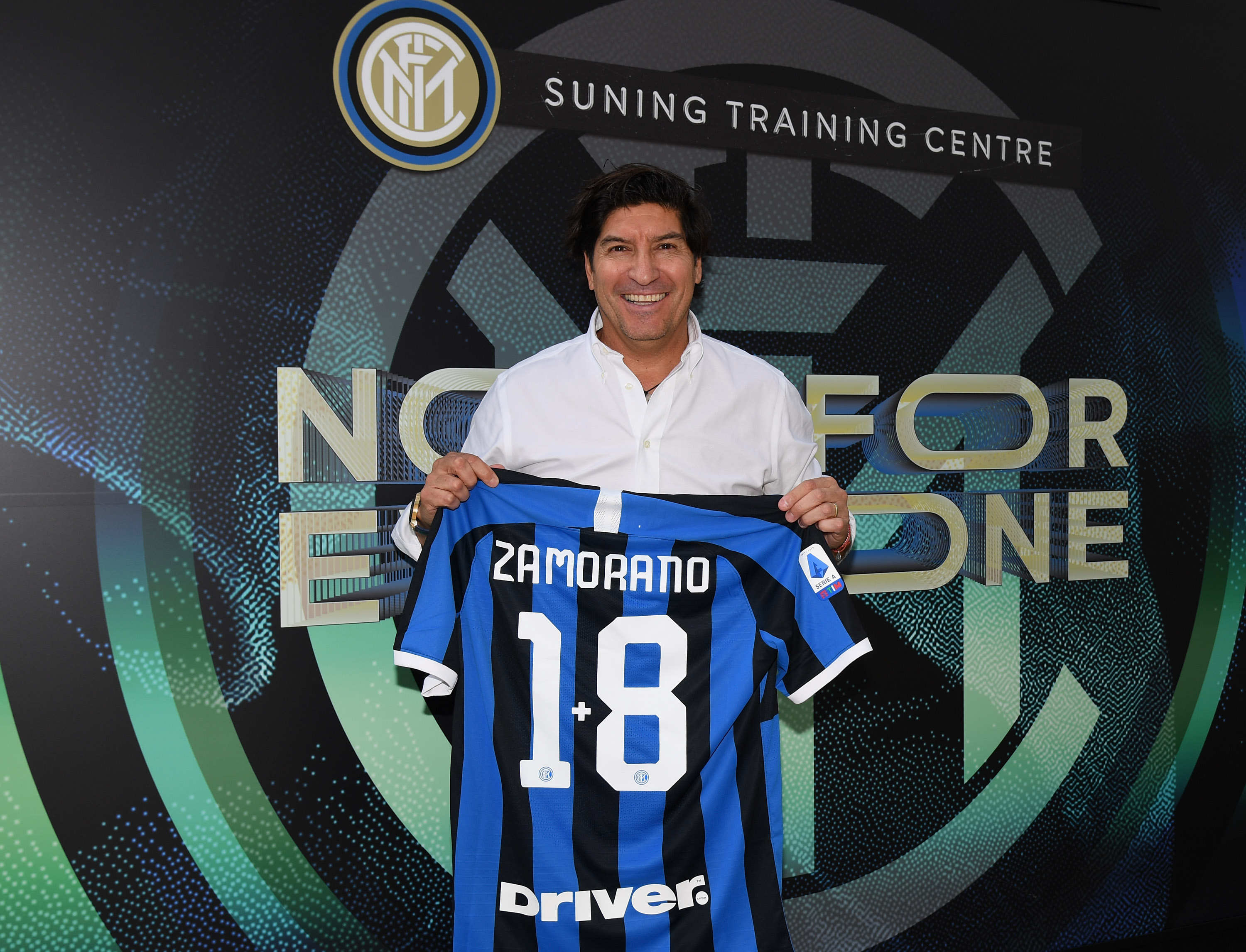
Ivan Zamorano made his own number and his own rules. After initially getting the No.9 shirt upon signing for Inter, he had it taken away when Ronaldo joined from Barcelona.
So the Chile striker took the number 18 instead and added a plus sign between the 1 and the 8 to signifiy that he was still a 9. Iconic.
17. Nicklas Bendtner

Nicklas Bendtner used several different numbers during his time at Arsenal – and none of them were orthodox.
The Danish striker started out with the number 33, before switching to 26 and then playing several seasons with the No.52. He claimed the change was down to advice from a fortune-teller his mother knew. Later, he wore the number 3 at Wolfsburg.
16. Cristiano Lupatelli

Sent on loan from Roma where he had worn 22 and 12, Cristiano Lupelli took the No.10 shirt at Chievo Verona. Why? Because of a bet he had made with friends.
Back at Roma, he took the No.3 shirt in 2003/04 and went through his entire club career without playing in the traditional number 1. Different.
15. Bixente Lizarazu

On his return to Bayern Munich for a second spell in 2005, French left-back Bixente Lizarazu opted for an unusual shirt number – 69.
There is a logical explanation for the defender's selection, though: Lizarazu was born in 1969, stands at 1.69m tall and weighed 69kg at the time. Why not?
14. Johan Cruyff

It might not seem unusual these days, but back in the early 1970s, top players like Johan Cruyff did not wear numbers outside 1-11.
Cruyff's number 14 has become iconic, but it originally happened by chance: ahead of a game for Ajax against PSV Eindhoven in 1970, team-mate Gerrie Muhren couldn't find his no. 7 shirt, so Cruyff offered him the no. 9 and picked one off the pile instead. It was the no. 14. Ajax won and Cruyff said the pair should keep the shirts. It became his trademark. The Dutch Football Association were not impressed but, when the Netherlands opted to allocate numbers alphabetically for the 1974 World Cup, an exception was made for Cruyff to wear 14. Ajax retired the number in 2007.
13. Mario Balotelli

As a youth player at Inter, Mario Balotelli chose the number 45 because he wanted to the No.9, which was taken. And well, add four and five and you get nine.
Unusual, but it makes sense, and he wore the number for most of his career – at Inter, Manchester City, AC Milan and Liverpool. Later, at Adana Demirspor in Turkey, he used the No.99 when the No.9 was unavailable.
12. Edgar Davids

Edgar Davids surprisingly joined Barnet as player-manager in 2012, but could not prevent the club from dropping out of League Two.
Davids remained in charge for the following season in the Conference, but was sent off in three of the opening eight matches and was gone by January. The Dutch legend also handed himself the No.1 shirt, saying he wanted to "start a trend" for midfielders to wear the jersey usually reserved for goalkeepers. Needless to say, it didn't catch on...
11. Rui Patricio

After Wolves goalkeeper Carl Ikeme retired due to acute leukaemia in the summer of 2018, his replacement Rui Patricio opted to leave the number 1 shirt vacant in his honour.
Instead, the Portuguese took the unusual step of picking the No.11 shirt, with back-up goalkeepers John Ruddy and Will Norris left with No.21 and No.31, respectively.
10. William Gallas

The No.10 shirt is special and is usually reserved for a team's most creative player. At Arsenal, it was worn with grace by the great Dennis Bergkamp between 1995 and 2006.
Bizarrely, the next man to wear the shirt was William Gallas. Admittedly, a top-class central defender, but not a number 10. The Frenchman took the shirt because his favoured 13 was unavailable. A bit strange, but at least it avoided some comparisons with Bergkamp for the more creative players.
9. Ronaldo
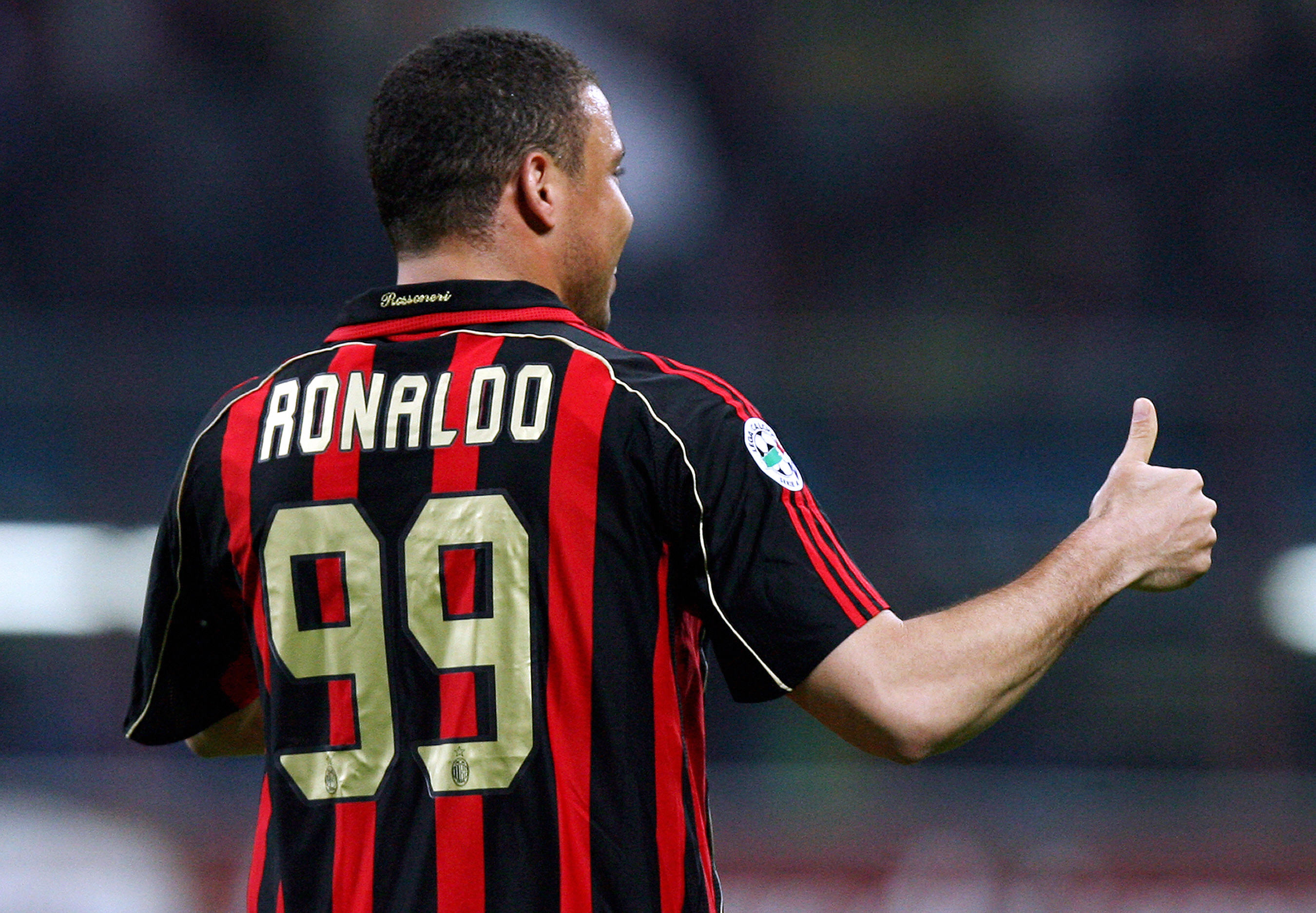
Despite being an Inter icon, Ronaldo joined their city rivals AC Milan in 2006 after leaving Real Madrid.
Filippo Inzaghi wore the No.9 shirt at Milan, so Ronaldo chose 99 instead. The Brazilian went on to score nine goals in just 20 appearances for the club before suffering a serious injury in February 2008. It was his last spell in European football, but he did return to spend a couple of years with Corinthians back in Brazil.
8. Gianluigi Buffon

Gianluigi Buffon found himself in hot water in Parma after choosing to wear 88, a number with neo-Nazi connotations.
Buffon had previously worn a T-shirt with a slogan used in the time of Benito Mussolini, but insisted both were mistakes. "I have chosen 88 because it reminds me of four balls and in Italy, we all know what it means to have balls: strength and determination," he said. He later defused the row by switching to 77 instead.
7. Andriy Shevchenko

Andriy Shevchenko wore the No.7 shirt for much of his career and for all of the seven seasons in his first spell at AC Milan.
But when the Ukrainian forward returned to San Siro for a second stint in 2008/09, the number was taken, so he bizarrely chose 76 instead – having been born in 1976. It didn't bring much luck, though, with just two goals in 28 appearances on loan from Chelsea.
6. Trent Alexander-Arnold

If you added up all the numbers from 1 to 11 in a traditional line-up, you'd get 66, which is what Trent Alexander-Arnold wears at Liverpool.
While the shirt number has become iconic and has started a trend among young fans, it happened almost by accident. It was the number assigned to him by the Reds' kit management coordinator Lee Radcliffe after he was promoted from the academy. "We don't like to give them a low number in case they sort of think they've made it straight away, if you know what I mean," Radcliffe told Liverpool's official site in 2020. Trent has worn it ever since – and he's definitely made it.
5. Zinedine Zidane
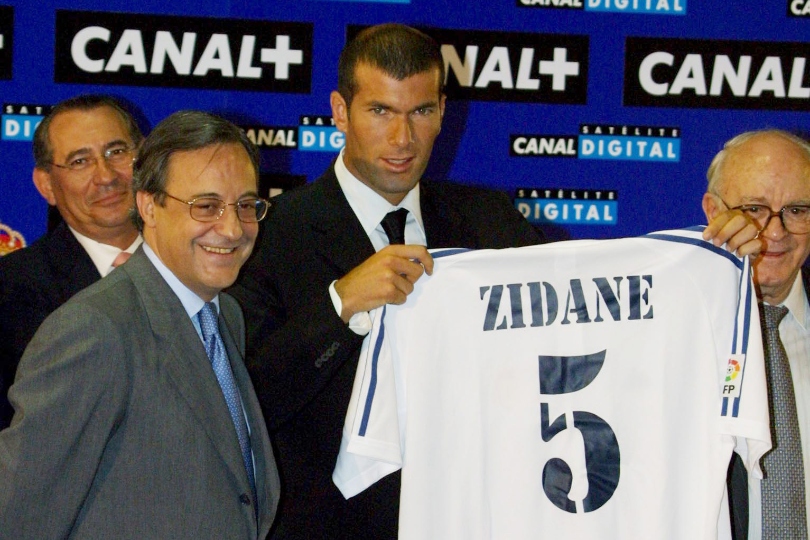
Zinedine Zidane wore the number 10 shirt throughout his entire international career with France, which included the 1998 World Cup win and another triumph at Euro 2000.
At club level, though, his numbers were more random: 11 at Cannes, 7 at Bordeaux, 21 at Juventus and 5 at Real Madrid. Luis Figo had been bought by Los Blancos a year earlier and had the 10. President Florentino Perez wanted his players wearing more traditional numbers, so Zidane picked 5 and made it special.
4. Declan Rice

Declan Rice is one of the finest footballers of his generation and as defensive midfielder for England, he sensibly wears the No.4 shirt.
At club level, though, his number is 41. Rice has explained that it was the number he was given by the kitman as an academy player at West Ham. And he has stuck with it ever since, even since joining Arsenal. If it ain't broke...
3. Asamoah Gyan

Asamoah Gyan scored 51 goals for Ghana in 109 games – all of them in the number 3 shirt – and he even had it dyed into his hair for international tournaments.
The former Sunderland striker called it his "powerful number". He once said: "For example, you want to lift something very heavy. You count to three in your mind."
2. Clint Dempsey

Clint Dempsey played his entire career as a forward or an attacking midfielder and retired as USA's joint-top scorer with 57 goals alongside former team-mate Landon Donovan.
Dempsey wore 23 (and later 32) at Fulham, but played for much of his career in the number 2 shirt. Why? It was the number he used at college and the first one he wore in MLS.
1. Osvaldo Ardiles

Osvaldo Ardiles won the World Cup with Argentina in 1978 and was part of the squad again four years later. The former Tottenham midfielder wore unusual numbers both times.
In both tournaments, Argentina shirt numbers were allocated alphabetically. So Ardiles wore the No.2 in 1978 and 1 (usually reserved for goalkeepers) in 1982. An exception was made for Diego Maradona in 1982, though – he had to wear 10.

Ben Hayward is a European football writer and Tottenham Hotspur fan with over 15 years’ experience, he has covered games all over the world - including three World Cups, several Champions League finals, Euros, Copa America - and has spent much of that time in Spain. Ben speaks English and Spanish, currently dividing his time between Barcelona and London, covering all the big talking points of the weekend on FFT: he’s also written several list features and interviewed Guglielmo Vicario for the magazine.
